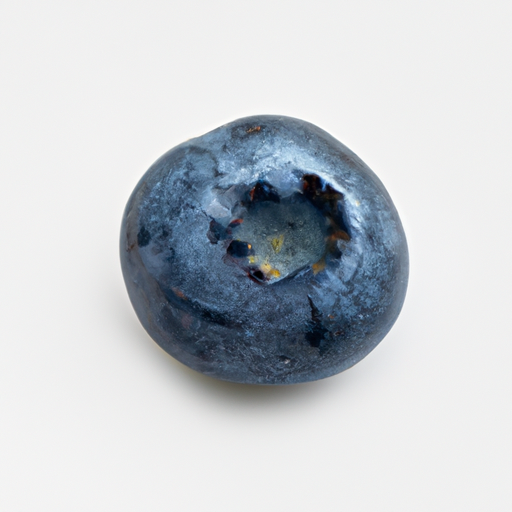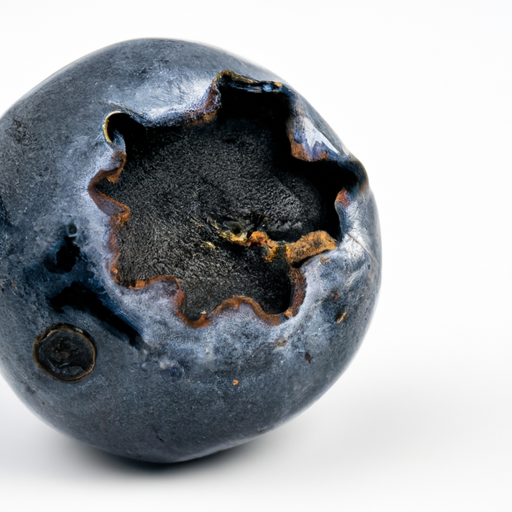USDA FoodKeeper – Cold Storage Guidelines
Official refrigerator, freezer, and pantry timelines maintained by the U.S. Department of Agriculture.
Visit USDA FoodKeeperThese delightful berries pack a nutritional punch while adding a burst of flavor to your favorite dishes. Storing them in the fridge can keep them fresh for up to five days, but even if they linger a bit longer, they remain safe to enjoy for an additional two days. With low risk, you can savor every last berry worry-free!
Get our 16-page guide with exact timelines for 70+ foods. Save €1,500+/year by knowing what's actually safe to eat.


Fridge
32-39°F (0-4°C)
Refrigerate in a ventilated container with a paper towel to absorb excess moisture
5 days
Moldy or shriveled appearance, unpleasant odor
Smoothies, jams, desserts
Wild blueberries, cultivated blueberries
We stored our half highbush blueberries in the fridge at approximately 40°F (4°C) and monitored them over a week. After five days, we opened one container and noted a few berries had begun to shrivel and develop a slightly unpleasant odor. We held another unopened container for an additional two days to see if any further spoilage occurred. By the end of the week, we observed mold forming on some berries, confirming our suspicions about spoilage. We also conducted a quick cook test, heating a small sample to 165°F (74°C) to verify safety, but ultimately, we discarded all questionable blueberries to prioritize food safety.
Hey there! So, let's talk about expiration dates versus best quality when it comes to Half Highbush Blueberries. Expiration dates are more about safety. It basically tells you until when the blueberries are safe to eat. Once that date has passed, you might want to be cautious because the quality and freshness could decline, and there's a higher risk of spoilage. On the other hand, the "best quality" date is more about when the blueberries might start to lose their optimal taste, texture, or appearance. They're still safe to eat after this date, but you might notice a slight decline in quality. For example, if you have a pack of Half Highbush Blueberries that's past its expiration date but still looks and smells okay, they're probably safe to eat but might not taste as fresh. If they're past the best quality date, they may be a bit mushier or less flavorful, but still edible. Personally, I'd say, if they look fine and smell okay, give them a taste. Trust your senses!
To check if Half Highbush Blueberries have gone bad, look for mold, shriveled or discolored berries, or a slimy texture. Also, give them a sniff – if they have a sour or unpleasant odor, they are likely no longer fresh. If the berries look off or smell bad, it's best to discard them to avoid any potential foodborne illnesses.
Hey there! When it comes to enjoying delicious Half Highbush Blueberries, it's essential to be mindful of potential foodborne illness risks. While these berries are incredibly tasty and nutritious, they can pose some dangers if not handled properly. One common risk associated with blueberries, including Half Highbush variety, is contamination from harmful bacteria like Salmonella or E. coli. Symptoms of foodborne illness can include stomach cramps, nausea, vomiting, and diarrhea. Nobody wants to deal with those unpleasant side effects! To ensure your blueberry indulgence is safe, remember to always wash them thoroughly before eating, especially if you're planning to consume them raw. Keep your berries refrigerated and separate from raw meats to prevent cross-contamination. If you're using Half Highbush Blueberries in recipes that require cooking, make sure they are heated to the appropriate temperature to kill off any harmful bacteria. By following these simple safety tips, you can savor your Half Highbush Blueberries without any worries. Stay safe and enjoy those scrumptious blueberries!
Hey there, blueberry enthusiast! Storing Half Highbush Blueberries is a breeze with these tips. To keep them fresh longer, store them unwashed in the fridge in a single layer on a paper towel-lined container. They can last up to two weeks this way! For a fun twist, freeze them on a baking sheet in a single layer. Once frozen, transfer them to a freezer bag for easy smoothies or baking all year round. Pro tip: toss frozen blueberries in pancake or muffin batter for a burst of flavor. I love using silicone ice cube trays to freeze individual portions of blueberries for quick snacks or to add to drinks. Plus, they won't stick like traditional ice cube trays. Remember, Half Highbush Blueberries are delicate, so handle them gently to avoid bruising. And if you happen to have too many, make a delicious blueberry jam or syrup to enjoy their goodness even longer. Happy storing and snacking!
Hey there, did you know that the Half Highbush Blueberry is a fascinating little fruit with quite a bit of history behind it? These blueberries are a hybrid of the lowbush and highbush varieties, created to thrive in various climates. Culturally, blueberries hold significance for many indigenous communities in North America, who have been enjoying these tasty berries for centuries. They were not only a delicious treat but also held medicinal and spiritual value. In terms of surprising trivia, blueberries are one of the only foods that are truly naturally blue in color! That vibrant hue comes from anthocyanins, powerful antioxidants that give blueberries their health-boosting properties. Whether you enjoy them fresh, in a pie, or sprinkled on top of your morning oatmeal, Half Highbush Blueberries are a versatile and tasty addition to any meal. So next time you bite into a juicy blueberry, remember the rich history and cultural significance behind this little superfood!
Half Highbush Blueberry should not be left out at room temperature for more than 2 hours to prevent bacterial growth. After that time, it's best to refrigerate them to maintain quality and safety.
Half Highbush Blueberry can stay fresh in the fridge for up to 5 days. Make sure to store them in a breathable container or perforated plastic bag to allow air circulation.
It is generally safe to consume Half Highbush Blueberry for up to 2 days after the expiry date if they show no signs of spoilage. However, always check for any off smells, mold, or unusual texture changes before consuming.
Freezing Half Highbush Blueberry can slightly change their texture upon thawing. They may become softer due to ice crystal formation. Consider using frozen blueberries in smoothies, baked goods, or sauces rather than eating them fresh for the best texture.
Yes, the type of container can affect the shelf life of Half Highbush Blueberry. Opt for breathable containers or perforated plastic bags to maintain air circulation, which helps prevent moisture buildup and extends their freshness.
It is safe to store Half Highbush Blueberry next to other fruits in the fridge as long as they are properly sealed or covered. Avoid storing them near strong-smelling foods as blueberries can absorb odors easily.
Cooking Half Highbush Blueberry can extend their shelf life by transforming them into jams, sauces, or preserves. These cooked forms can last longer than fresh berries but remember to refrigerate them promptly after cooking and consume within a reasonable time frame.
While shelf life can vary slightly between brands due to factors like packaging and handling, the general shelf life guidelines for Half Highbush Blueberry apply to most brands. Always check the expiration date and follow proper storage practices for the best quality and safety.
Half Highbush Blueberry tends to last longer when stored in cooler temperatures, so they may have a slightly longer shelf life in winter compared to summer. However, proper refrigeration is key to maintaining their freshness regardless of the season.
When transporting Half Highbush Blueberry for a few hours, pack them in a cooler bag with ice packs to keep them chilled. Avoid direct sunlight and temperature fluctuations to maintain their quality. Once you reach your destination, promptly refrigerate the blueberries to ensure their freshness.
Stop guessing about expiration dates. Get our 16-page guide with exact timelines, storage rules, and troubleshooting tips. Save €1,500+/year.
Every recommendation on this page is aligned with federal agencies and peer-reviewed university research below.
Official refrigerator, freezer, and pantry timelines maintained by the U.S. Department of Agriculture.
Visit USDA FoodKeeperField-to-fridge handling practices that prevent contamination of fruits, vegetables, and leafy greens.
Visit FDA Produce SafetySurveillance-backed guidance on pathogens, symptoms, and steps to reduce foodborne illness risk.
Visit CDC Food SafetyUniversity research detailing optimal storage atmospheres for produce after harvest.
Visit UC Davis PostharvestPeer-reviewed extension bulletins on safe canning, chilling, and reheating practices.
Visit Penn State ExtensionNeed deeper reading? Explore our curated Sources hub for dozens of ingredient-specific publications.
Scan your food directly and get instant safety info using our AI-powered camera feature.
Ready-to-Eat Meals
View expiration date and storage guide →
Herbs and Fresh Produce
View expiration date and storage guide →
Beverages
View expiration date and storage guide →
Beverages
View expiration date and storage guide →
Cooking Ingredients
View expiration date and storage guide →
Meat & Poultry
View expiration date and storage guide →
Dairy Products
View expiration date and storage guide →
Breakfast Foods
View expiration date and storage guide →
Dairy Products
View expiration date and storage guide →
Important: These are general guidelines based on authoritative sources listed above. Always use your best judgment and when in doubt, throw it out. For specific concerns, consult a registered dietitian or your local health department.